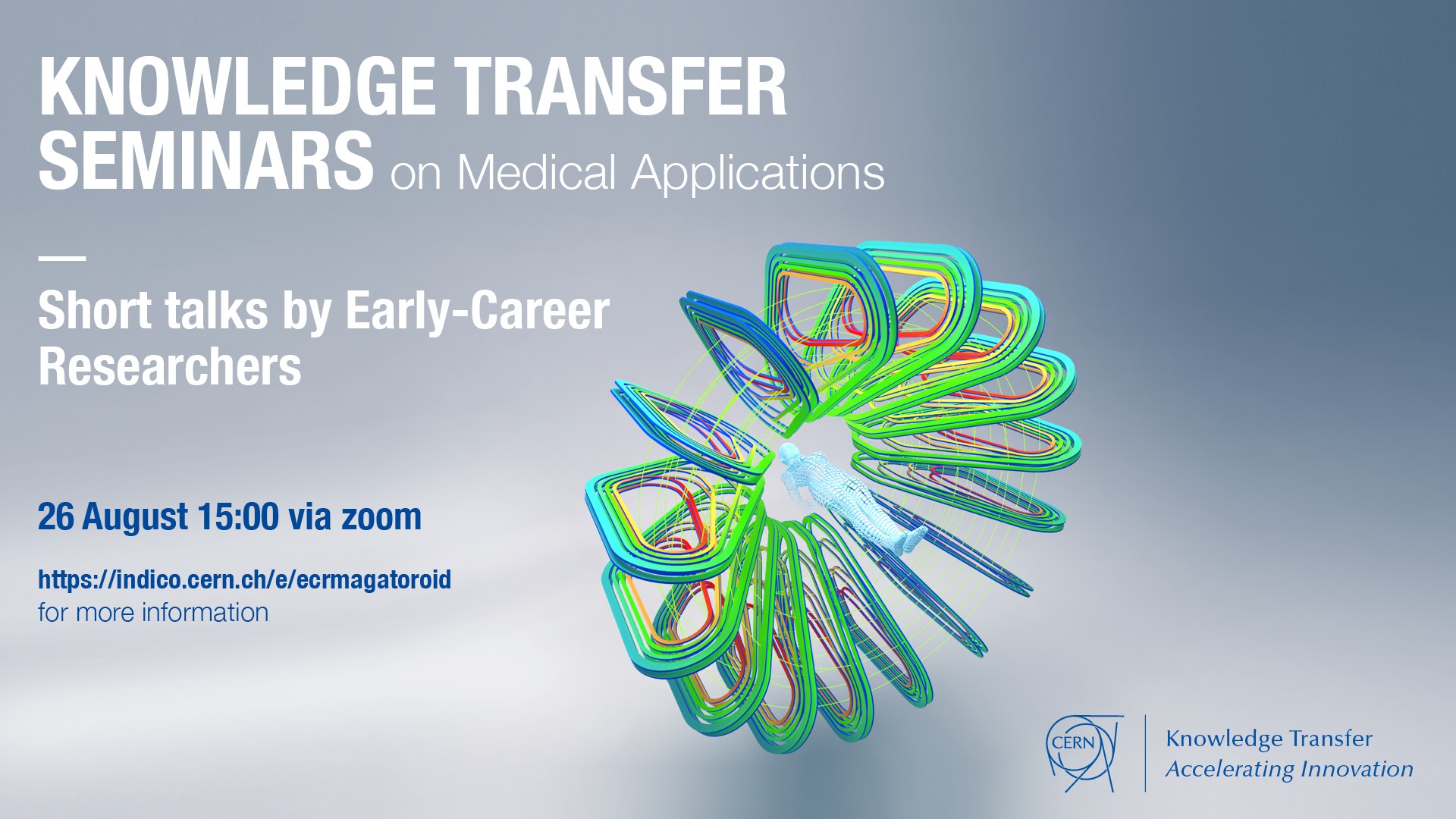
Discover how technological advances for high-energy physics have become essential tools for modern medicine.
This series of short talks is given by Early-Career Researchers working on projects related to diverse medical applications that arise from technology developed at CERN and in high-energy physics.
In this seminar 2 ECRs working on the GaToroid project will share their work.
GaToroid is part of the Next Ion Medical Machine Study (NIMMS) project which outlines an umbrella R&D programme for the development of critical accelerator technologies related to ion therapy; the programme builds on existing activities and on core CERN competences.
The GaToroid project aims to develop a new type of gantry for hadron therapy. The novel concept defined in 2017 by Luca Bottura uses the axis-symmetry from a toroidal field to bend the beam and deliver it to the patient from several directions. The magnetic field of this toroidal gantry is static and neither the magnets nor the patient need to be rotated. A single upstream vector magnet is used to kick the particles into the gantry with a proper angle, depending on the energy and the desired direction. Able to be scaled to different energies, this gantry design can be adapted for either protons, ion beams or electrons. The elimination of all rotating parts as well as the significant reduction of size, weight, and cost thanks to the use of superconductive magnets are a big step forward that has the potential to improve greatly hadron therapy facilities. It opens as well great opportunity and potential in the domain of FLASH therapy.
In order to assess the technical feasibility of such a device, the research group has lately been focused on the development of a scaled down demonstrator magnet. Two versions are being built and will be tested: one with HTS and another with LTS as conductor. The advances on the mechanical design will be presented, starting from an ideal coil configuration and gradually introducing modifications to meet structural, operational and manufacturing requirements. The impact of the design changes on the magnet have been evaluated throughout, from both the structural and the electromagnetic point of view, and the numerical models involved will be shortly subjected to validation through experimental evidence. Finally the progress in the construction of these 2 magnets will be shown.
This seminar will take place on zoom please use this zoom link, password: gatoroid
There are very limited seats available in the room, please contact us if you'd like to attend.
Please check the indico page for updates. During the seminar, in case of technical issues, It is where we will post information. Thank you!
For information about the next Knowledge Transfer Seminar, sign up to our e-group at http://cern.ch/go/F9cX